|
|
|
|
place
|
Tulcingo
de Valle is a town located at the bottom of the state of
Puebla in Mexico, close to the borders of the states of
Guerrero and Oaxaca.
The Mexican National Institute of Geographic Statistics
and Informatics (INEGI) reported in its 2000 Census a population
of 5,154 inhabitants, of which 2,743 were women. (inegi)
Nowadays, it is very hard to estimate the current population
because of the high emigration index. However, the population
could be around 20,000.
|
|
 |
|
town
of emigrants
economy
food
religion
new
york influence
traditions
|
|
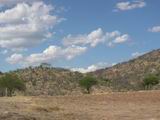

|
as the villagers consider their town.
They estimate that at least half of the Tulcingo
population is mainly in New York.
Most of the families have relatives that have either
emigrated to the U.S.A. or been there.
Most of the people that leave don't go back to stay,
however most of them intend to, one day, go back to
live in their hometown.
Since the migratory status cannot always be arranged
in a couple of years, many of the people who leave
don't go back in the short term, not even to visit.
Few are those that go back to stay. December is the
time when most of the emigrants go back to visit their
families, to take part in the festivities, or to celebrate
their own weddings, baptisms, birthdays.
|
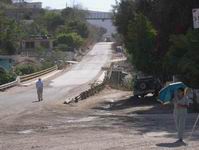 |
Taking the risk of crossing the border and paying
thousands of dollars to be taken over is commonplace
for them.
When a young person, especially a man, hasn't been
in the U.S.A., he feels more uncomfortable saying
that he has never been in the U.S.A. than admitting
that he didn't finish junior high school.
|
|
|
In summer many working parents in New York send their
kids to spend summer in Tulcingo with their grandparents
or other relatives.
Kids are raised with the idea that one day -soon-
they will depart to New York. Some of them don't even
finish their secondary schooling. It's not a matter
of going to the United States but to "New York".
Until a few years ago the emigrating population was
mostly men, nowadays there are many young women heading
to New York too.
|
| |
|
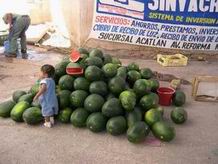 |
The economy of the town is based on commerce. Since
most of the men leave, looking for better opportunities,
there's nobody in town to work the land. And the people
that do go back usually set up a business of what
they learned to do in their American jobs.
Some emigrants' reason for not coming back is that
there's nothing for them to do in their town.
|
| |
|
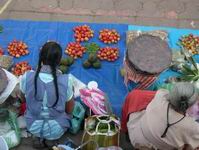 |
still is one of the special and unique things that
keep Mexicans being Mexicans, no matter where they
are. Thousands of kilos of all kinds of traditional
food, from raw seeds and beans to handmade products
(tortillas), mom's special treats (mole, chocolate)
or even commercial candy or canned products are sent
to emigrants every year.
|
| |
|
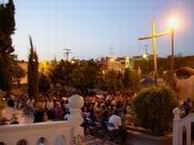 |
most of the population is Catholic;
the Patron Saint of the town is San Gabriel and his
festivity is in April.
|
| |
|
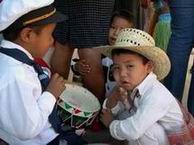 |
surprisingly, fashion trends such as music, food,
and speaking styles are some of the influences that
first reach a tiny and remote place like Tulcingo
than to Mexico's capital city.
Bachata, a type of music from the Dominic Republic,
was taken to Tulcingo via the New York population,
and it has largely replaced profoundly rooted salsa,
cumbia and merengue.
|
| |
|
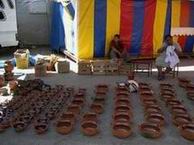 |
still remain very strong in the population.
most of those living in the U.S.A. try to maintain
their customs too.
|
|
|
|
people
|
workshop
|
|
|
participants
and people involved
|
the
process of
radio production
|
the
transmitted
radio program
|
|
|
|

